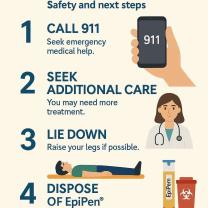Can you switch between losartan and lisinopril?
I am not a doctor, but I can provide some general information. It's crucial to consult with your healthcare provider before making any changes to your medication regimen. That being said, both losartan and lisinopril are medications commonly used to treat high blood pressure. They belong to different classes of drugs – losartan is an angiotensin II receptor blocker (ARB), while lisinopril is an angiotensin-converting enzyme (ACE) inhibitor.
If your doctor determines that a switch in medication is necessary, they will guide you through the process. The transition between losartan and lisinopril may involve gradually decreasing the dosage of one while gradually increasing the dosage of the other. This transition is typically done under the supervision of a healthcare professional to monitor your blood pressure and overall health during the switch.
It's important not to self-adjust your medication or switch without consulting your doctor, as they can consider factors such as your medical history, current health status, and any potential interactions with other medications.
Always follow your healthcare provider's instructions and attend follow-up appointments to ensure that the transition is smooth and effective. If you experience any concerning symptoms or side effects, contact your healthcare provider immediately.
Understanding the Differences and Similarities between Losartan and Lisinopril
Losartan and lisinopril are both angiotensin II receptor blockers (ARBs) used to treat high blood pressure (hypertension) and other cardiovascular conditions. They work by blocking the action of angiotensin II, a hormone that constricts blood vessels, leading to increased blood pressure. Both medications are generally well-tolerated and effective in lowering blood pressure.
Differences between Losartan and Lisinopril:
Mechanism of action: Losartan is a direct angiotensin II receptor blocker, while lisinopril is a prodrug that is converted to an active form in the body that blocks angiotensin II receptors.
Pharmacokinetics: Losartan has a longer half-life than lisinopril, meaning it stays in the body for a longer time. This may allow for once-daily dosing.
Side effects: Losartan is generally associated with fewer side effects than lisinopril. The most common side effects of losartan include headache, dizziness, and fatigue. The most common side effects of lisinopril include cough, headache, and dizziness.
Similarities between Losartan and Lisinopril:
Effectiveness: Both medications are effective in lowering blood pressure.
Safety: Both medications are generally well-tolerated.
Indications: Both medications are used to treat high blood pressure and other cardiovascular conditions.
Factors to Consider When Switching between Losartan and Lisinopril:
Reason for switching: If you are not tolerating losartan or lisinopril well, or if it is not controlling your blood pressure, switching medications may be necessary.
Medical history: If you have any underlying medical conditions, your doctor will need to consider these when deciding whether to switch medications.
Cost: Losartan and lisinopril are both available in generic forms, so the cost of switching may not be a significant factor.
Consulting with a Healthcare Professional for Personalized Guidance on Switching Medications:
It is important to consult with your healthcare professional before switching between losartan and lisinopril. They will be able to assess your individual needs and determine if switching is the right option for you. They will also be able to monitor you closely after switching medications to ensure that you are tolerating the new medication well and that your blood pressure is controlled.













